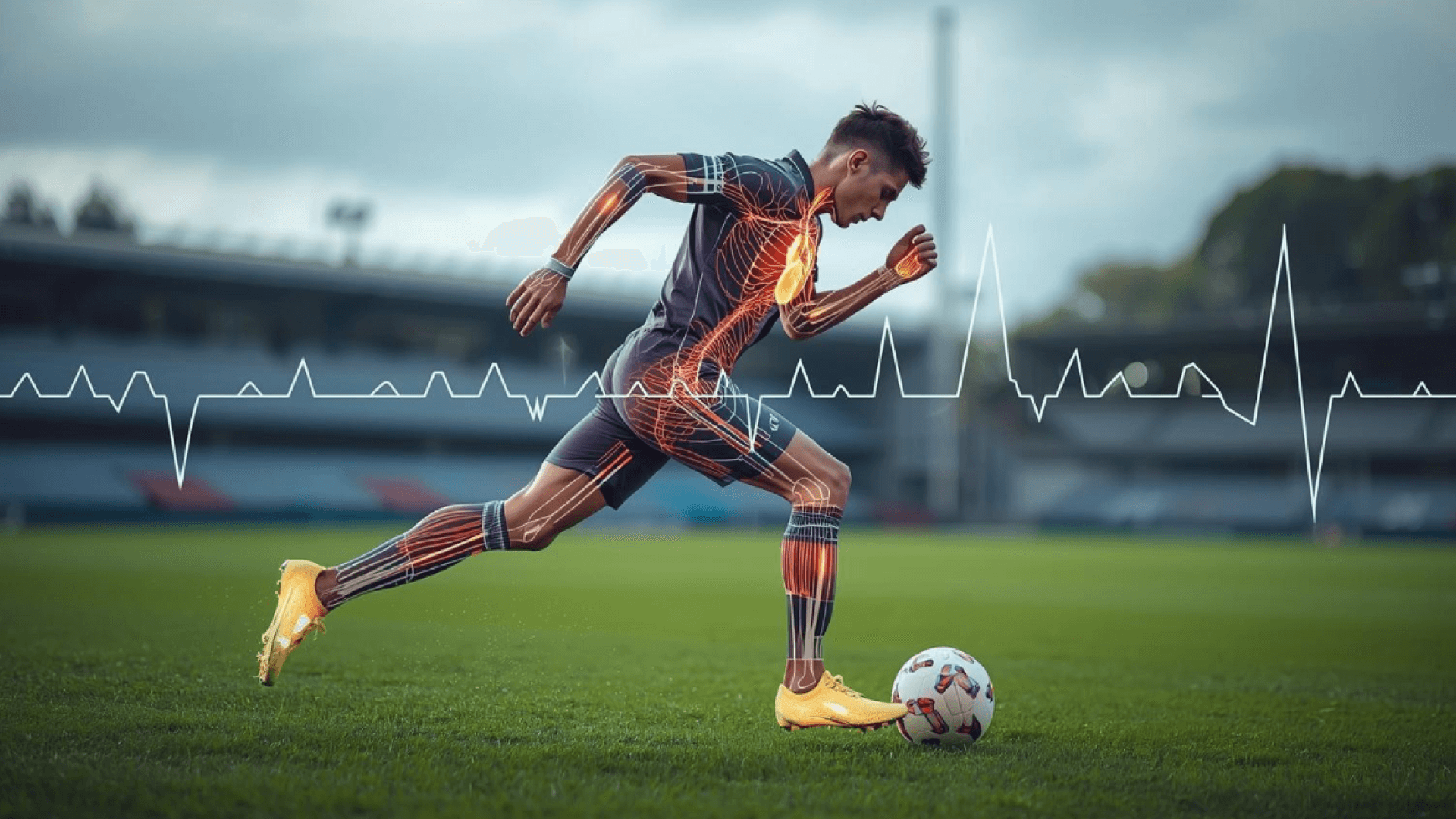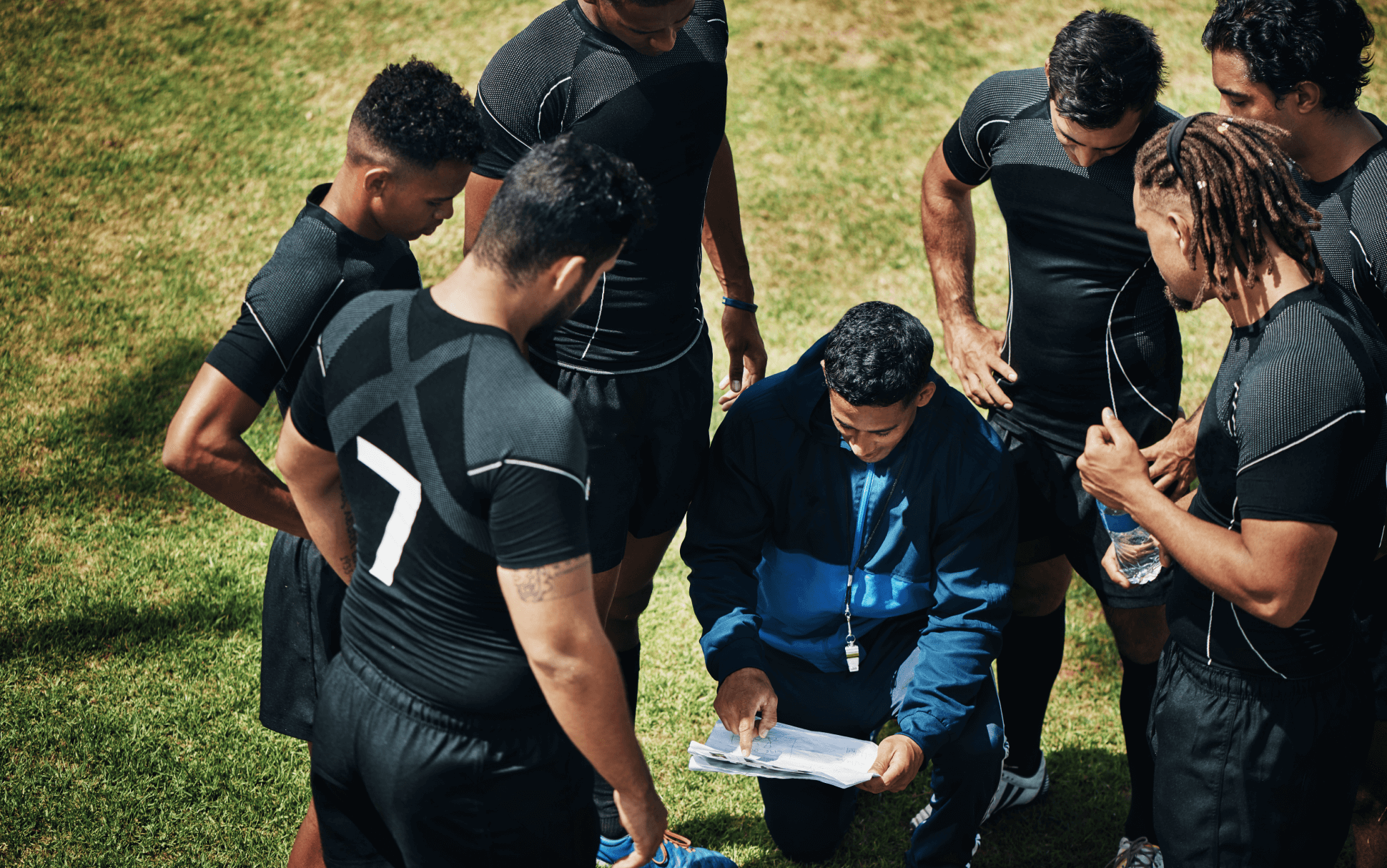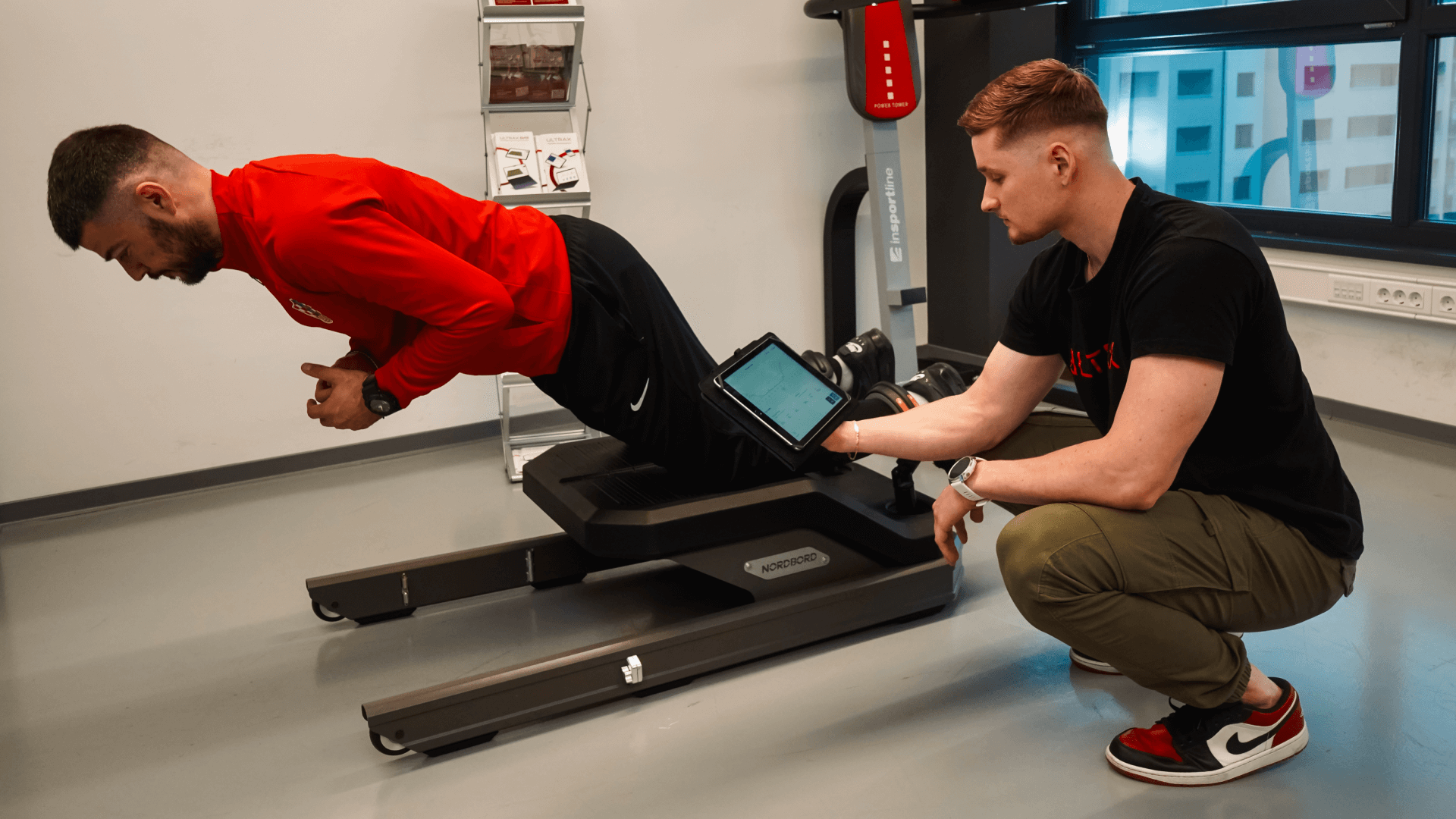Introduction: The Underrated Skill That Wins Games
In the world of high-performance sport, we often praise speed, power, and explosiveness. But what if the true game-changer isn’t how fast an athlete moves, but how well they stop?
Deceleration, defined as the ability to reduce speed efficiently and safely, is a crucial yet often overlooked element of elite athletic performance. In dynamic sports such as football, basketball, handball, or rugby, an athlete’s ability to control momentum, change direction, and react to stimuli can determine not only the outcome of the game, but also their resilience to injury.
Metabolic and Energetic Determinants of Deceleration
Deceleration places substantial demands on the body’s metabolic and energetic systems, particularly during repeated sprint ability (RSA) activities. This term refers to the athlete’s capacity to perform multiple short sprints (less than 10 seconds) with brief recovery periods (no longer than 60 seconds).
The efficiency of repeated sprints depends on several physiological variables, most notably:
- Muscle excitability, which can be compromised by a reduction in the activity of the Na⁺/K⁺ pump, leading to diminished muscle contraction force.
- Phosphocreatine (PCr) availability, a crucial immediate energy source, which becomes increasingly significant with each successive sprint repetition.
- Aerobic capacity (VO₂max), allowing athletes with higher levels to maintain greater force output and sprint speed across repetitions.
Interestingly, while anaerobic glycolysis plays a dominant role in the first few sprints—contributing approximately 32–40%—its importance diminishes with repeated efforts, dropping to as low as 9% by the tenth sprint. This metabolic shift highlights the dual importance of both anaerobic and aerobic systems, and especially the body’s capacity to resynthesize creatine phosphate during recovery.
In short, deceleration is not just a mechanical action; it is a demanding bioenergetic event that tests the very core of an athlete’s conditioning and recovery capacity. (Figure 1)
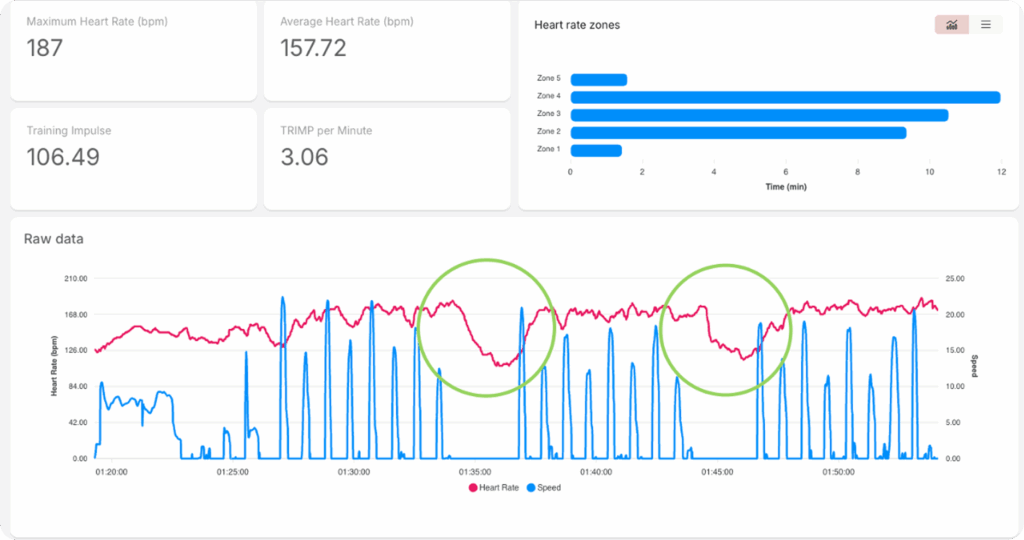
Neural Mechanisms: Brain-Body Integration in Multi-Directional Speed
Deceleration is rarely a simple linear stop. Instead, it is a complex neuro-motor event that typically occurs within the framework of multi-directional speed (MDS)—the athlete’s ability to accelerate, decelerate, change direction, and maintain speed in multiple planes of motion.
Crucially, these actions rely on the seamless integration of perception, decision-making, and motor execution. Research shows that:
- The ability to process visual cues, assess opponent movement, and choose the correct motor response is at the core of high-level agility.
- Cognitive functions such as concentration, divided attention, and anticipation govern the quality and timing of physical execution.
- Every motor response is pre-programmed in the central nervous system, involving both intrinsic (e.g., proprioception) and extrinsic (e.g., visual and auditory) feedback.
Agility training, therefore, is not merely physical. It requires cognitive-perceptual development, enabling athletes to react to unpredictable scenarios with precision. This neurocognitive framework becomes especially relevant in chaotic, sport-specific environments where milliseconds make the difference between a successful intervention and a missed opportunity (Figure 2).
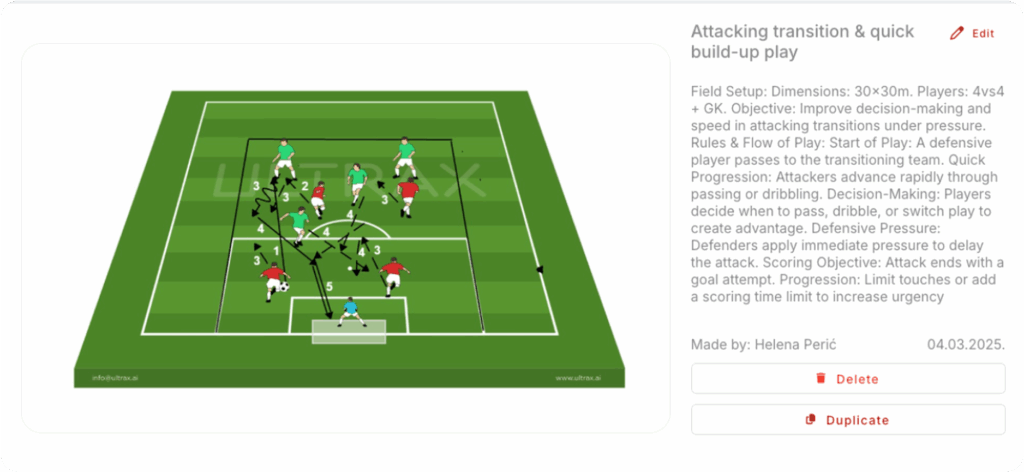
Neuromuscular Factors: The Mechanical Foundation of Deceleration
The final layer of deceleration performance is rooted in the neuromuscular system, where strength, coordination, and timing converge to absorb and redirect force.
Key components include:
- Eccentric strength, particularly in the quadriceps and hamstrings, is vital for absorbing horizontal forces during braking. Athletes with superior eccentric strength can reduce speed from higher velocities and execute faster direction changes with greater control.
- Reactive strength, often measured through drop jump reactive strength index (RSI), reflects an athlete’s ability to rapidly transition from eccentric to concentric contraction. A higher RSI indicates better readiness for rapid braking and posture adjustment.
- Concentric power, especially during late deceleration phases, contributes to re-acceleration and directional movement post-braking.
- Dynamic balance and neuromuscular coordination, which ensure movement efficiency and joint stability under sudden load.
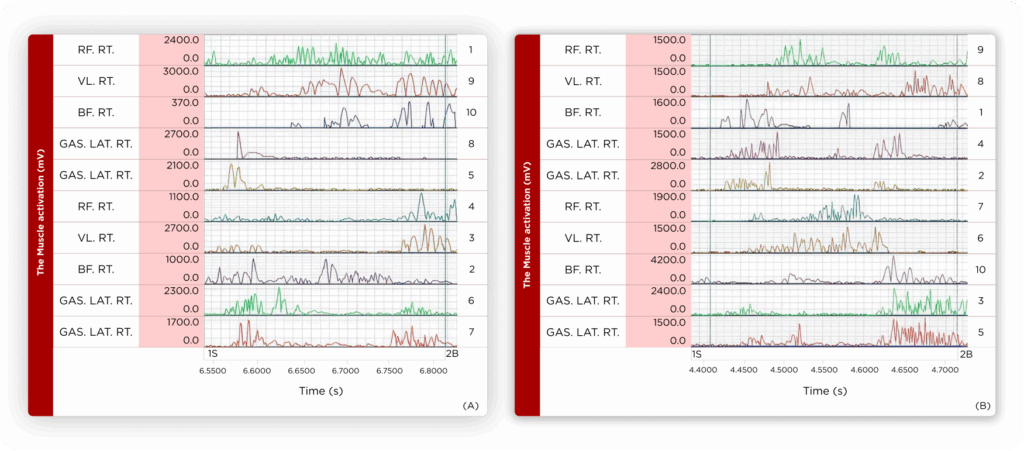
Electromyography (EMG) data further reveals that elite athletes show reduced muscle activation duration and quicker reaction times, reflecting more efficient neuromuscular patterns. This not only improves movement economy but also reduces the likelihood of injury under high-speed deceleration loads (Figure 3).
Additionally, the ability to generate eccentric force quickly (force impulse at ~133–199°/s) during key moments, such as the transition phase of a countermovement jump (CMJ), is directly linked to effective horizontal braking.
The Deceleration Chain: From Brain to Muscle, Every Link Matters
To optimize deceleration performance, coaches and sports scientists must address all components of the performance chain:
1. Metabolic Conditioning – Develop repeated sprint capacity (RSA) with a focus on both anaerobic power and aerobic recovery.
Weekly RSA Protocol (3x/week):
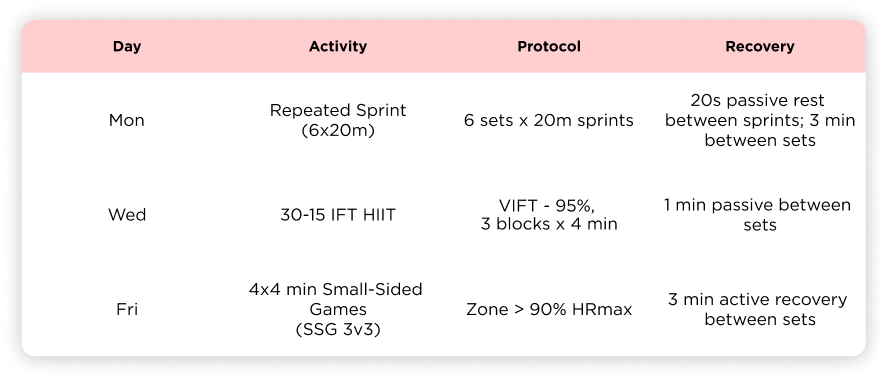
Note: Use VIFT from 30-15 IFT test for individualized load.
2. Neural Readiness – Implement perceptual and cognitive agility drills that mimic real-game stimuli.
Example Drills:
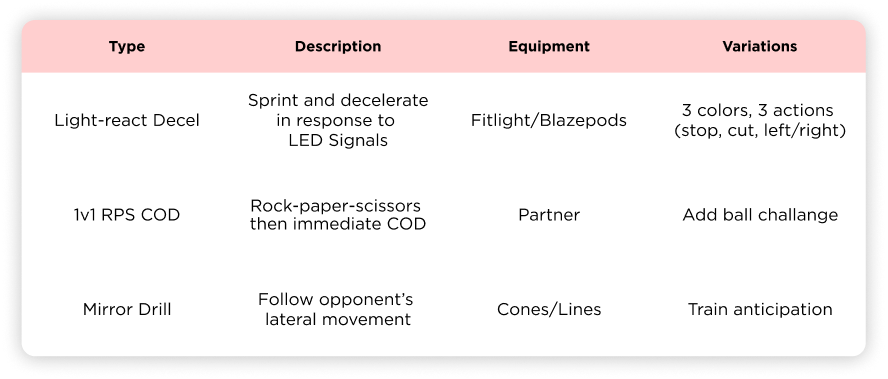
3. Neuromuscular Strength – Integrate eccentric, reactive, and concentric strength training, particularly emphasizing:
• CMJ analysis
• Drop jump RSI
• Unilateral isometric strength tests
Weekly Strength Microcycle (2x/week):
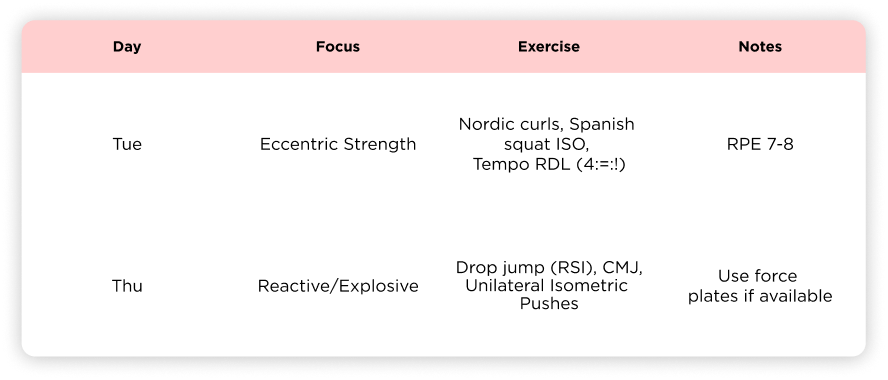
Testing:
• CMJ (height and strategy)
• Drop Jump RSI (>2.5 = excellent)
• Isometrics (hip, knee, ankle) – assess L/R asymmetry
4. Injury Prevention – Monitor asymmetries, especially in forced deceleration protocols, to avoid imbalanced development and overuse injuries.
Prevention Protocol (1–2x/week):
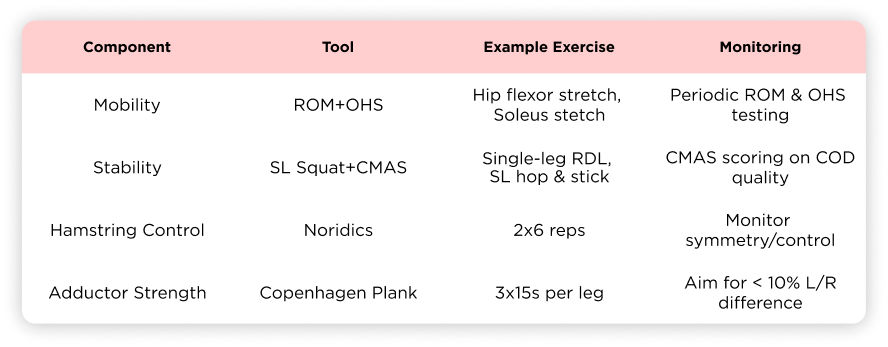
Conclusion: Deceleration Defines the Athlete
While speed and agility often steal the spotlight, the ability to decelerate under control is what truly defines a complete, resilient, and elite athlete. From elite footballers navigating crowded spaces to basketball players stopping on a dime, the most effective performers are those who can not only move fast but stop, change, and adapt faster than their opponents.
Ready to Redefine Speed?
If you’re an athlete, coach, or strength professional aiming to unlock the full performance potential, start by focusing on deceleration. This means programming sessions that include:
• Eccentric overload training
• Drop jump and RSI assessments
• Reactive agility drills with decision-making tasks
• Repeated sprint protocols with controlled recovery
Don’t just train to go fast, train to stop faster, smarter, and safer (Figure 4).
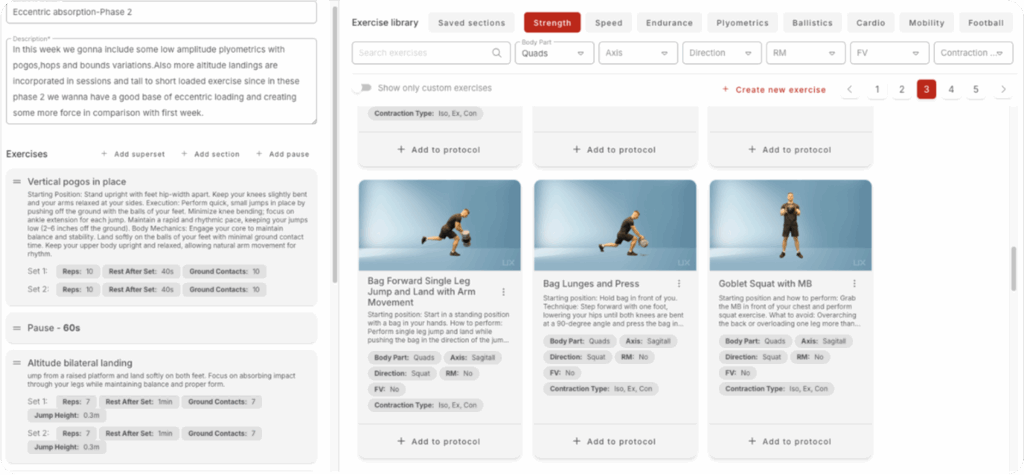
Literature
1.) Bok, Daniel ; Jukić, Igor Sposobnost ponavljanja sprintova: Ograničavajući čimbenici i trenažne strategije // Kondicijska priprema sportaša 2013 : zbornik radova. Zagreb: Kineziološki fakultet Sveučilišta u Zagrebu ; Udruga kondicijskih trenera Hrvatske, 2013. str. 53-59
2.) DeWeese B. H. i Nimphius S. (2016.). Program design and technique for speed and agility training. U Haff G.G. i Triplett N.T., Essentials of Strength Training and Conditioning (str. 521-558). Lower Mitcham, Australia: Human Kinetics Publishers.
3.) Girard, O., Mendez-Villanueva, A., & Bishop, D. (2011). Repeated-sprint ability – part I: factors contributing to fatigue. Sports medicine (Auckland, N.Z.), 41(8), 673–694. https://doi.org/10.2165/11590550-000000000-00000
4.) Piechota K, Majorczyk E. Decision-Making Time and Neuromuscular Coordination in Youth and Senior Soccer Goalkeepers. Sensors. 2023; 23(9):4483. https://doi.org/10.3390/s23094483

